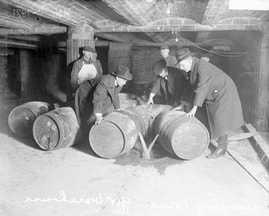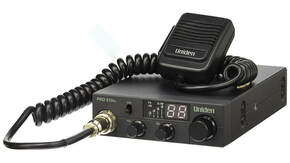
Normally, when we think of numbers or groups of numbers, it tends to be related to amounts or mathematical equations. However, there are several examples where numbers have since become shorthand for a phrase or colloquialism. Ipso facto, integer as idiom.
There are also derivations on that theme, where adding a number or numerical grouping to a word or two does the same trick. For purposes of this blog, we drew a hard line that only number groupings made this list. (We know your time is valuable!)
Shall we …
“86”
What does it mean to eighty-six something? Not surprisingly, as with many origin stories, it depends on both who you ask and what rocks you overturn. In short, the term “to 86 [something]” means to end the use of it; dispose of it; excise it out. That’s where the consensus ends, albeit much of the information found tends to center around its use within the food and beverage realm.

One source described its origin stemming from a New York City speakeasy called Chumley’s, which was located at 86 Bedford Street. The bar had an adjoining courtyard where customers could imbibe and exit discreetly to avoid the police.
Many beat cops in 1920s New York were on the payrolls of the illegal bars throughout the city and would forewarn bartenders before an imminent raid. The bartender at Chumley’s supposedly issued the command “86 everybody,” which was the signal for patrons to scram via the 86 Bedford Street entrance, avoiding detection, as the cops would begin their raid coming through the courtyard.
Another food-and-bev reference: Great Depression-era soup kitchen kettles held 85 servings of soup, so the 86th person was out of luck.
Others say it originated at Delmonico’s Restaurant in Manhattan. The No. 86 entree on their menu was a steak; it was the restaurant’s most popular item and often sold out. The term allegedly morphed into shorthand for “being out of any item.”
Some say the term has military roots and that the term originated during the Korean war. The term was a reference to the F-86 fighter jet; when an F-86 shot down an enemy plane, it was 86’d.
More military: The United States military’s Uniform Code of Military Justice includes “Article 86,” which is Absence Without Leave, a.k.a A.W.O.L. As a euphemism for A.W.O.L. (already an acronym), the term morphed into military shorthand to TO (throw out): Rotary phones had a “T” on the 8 spot and O (zero) on the 6 spot, so to throw out something was to 86 it.
Explanations even stretch as far as the electrical industry, where devices had numbers: a 27 was an undervoltage relay, 43 was a selector switch, and an 86 was a trip and lockout device. So an 86 operation means the affected piece of equipment was out of service.
And the list goes on. If anyone asks where the term 86 originated, tell them what I’ve concluded: people don’t really know, but there are at least 86 theories.
There’s a great article on this in
The Atlantic from June 2018 if you want to read more about it.

“10-4”
After our first entry, this next one, 10-4, has a fairly concise origin: it is a certain phrase within the numerous “10 codes” used by CB radio operators. The term’s meaning, as most know, is “message received.” While the exact origin of the 10 codes is murky, the consensus is that their use began with police departments in the 1930s and ’40s, gaining wide-scale popularity by the 1950s.
Information from an article in CB Radio Magazine says that 10 codes were originally referred to as “Ten Signals.” These codes were produced by the Association of Public Safety Communication Officials and then sold to public safety departments.
CB operators, be they cops, truckers, bikers (and even my grandfather, circa 1982, and his CB-equipped Cadillac Sedan De Ville), use 10 codes as easy ways of conveying information shortly and recognizably.
Another 10 code that has gained wide acceptance, but didn’t technically make the cut on this blog (because it requires words to evoke its meaning) is, “what’s your 20?” (We snuck it in anyway.) Code 10-20 is a request for a communicatee’s location.
Although there are now roughly 200 codes in the 10 Code category, 10-4 and “What’s your 20?” are the most recognizable among us lay folk.

“24/7”
Merriam-Webster has this numerical reference, which means 24 hours a day, seven days a week, as either an adjective or adverb, dating back to 1985, but offers no further information.
The Oxford English Dictionary dates its use as a phrase from a 1983 article in Sports Illustrated, where now-former NBA basketball player Jerry Reynolds was quoted describing his jump shot. Reynolds said his jump shot was “…good 24 hours a day, seven days a week, 365 days a year.” The BBC also cites Reynolds as the progenitor of this phrase.

“420”
Unless you are living under a rock, this numerical phrase is a clarion call for users of marijuana, transforming April 20 into an unofficial holiday for cannabis culture. While often cited as a police code for “marijuana smoking in progress,” the most credible origin story is attributed to a group of students in Marin Co., Calif., and dates back to 1971.
In 1998, High Times magazine debunked the “cannabis smoking in progress” theory and shared the story of five students at San Rafael High School who would meet at 4:20 p.m., by the campus’s statue of chemist Louis Pasteur, to partake in the wacky weed.
They chose that specific time because extracurricular activities had usually ended by then. This group — which included Steve Capper, Dave Reddix, Jeffrey Noel, Larry Schwartz, and Mark Gravich — became known as the “Waldos,” because they met at a wall. They would say “420” to each other as a code for marijuana.
A 2016 article in Time magazine confirmed this story in an extensive interview with Reddix, who offered up letters and posters to substantiate the group’s claim — and subsequent birth of a movement.
69
Hey now! Being a family show, we will eschew the discussion on this one.

There are undoubtedly countless other examples of numerical use in phrases: “Take 5,” the “11th Hour,” “behind the 8-ball,” on “cloud 9,” and so forth. Having made the criterion only numbers kept this blog to a (relatively) manageable read.
Now time to 23 skidoo!
